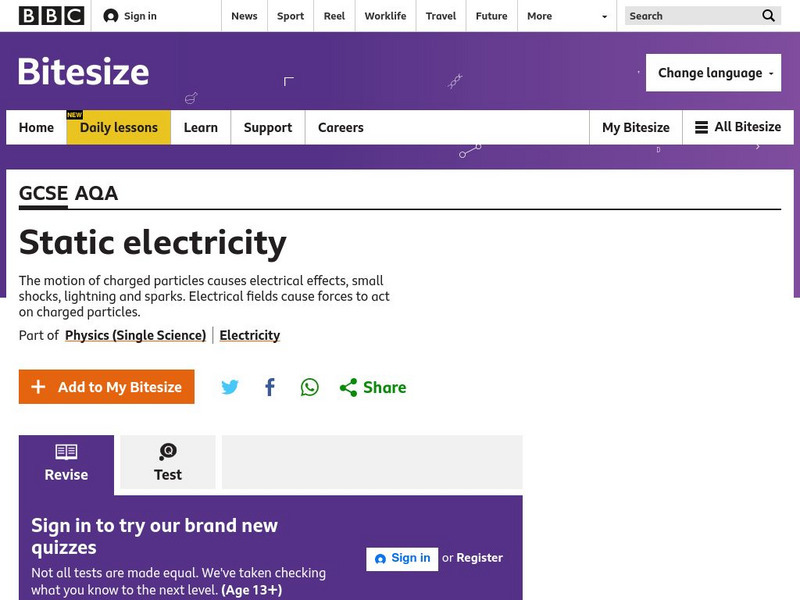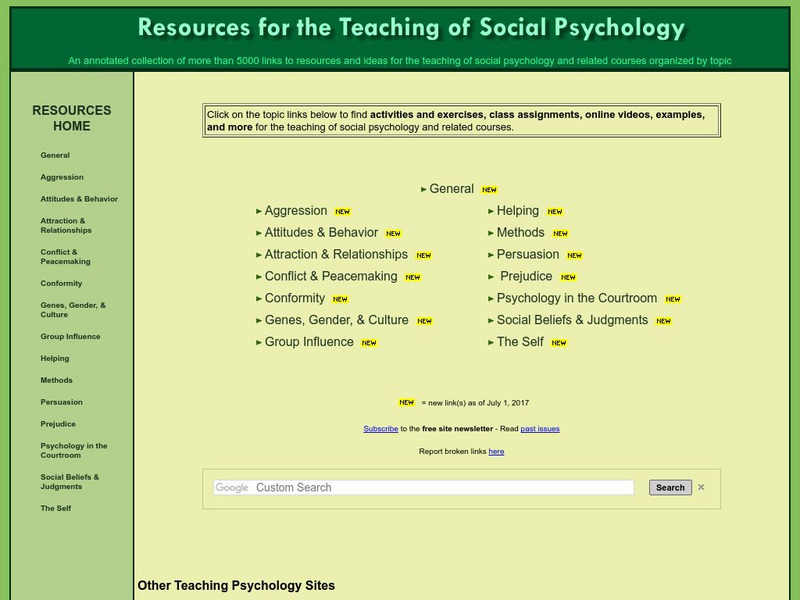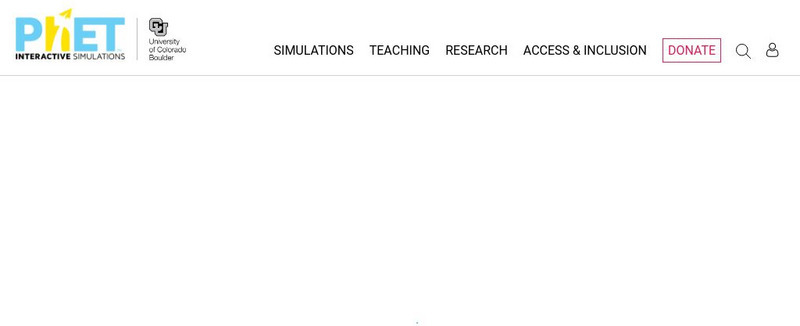Science Education Resource Center at Carleton College
Serc: Mother Nature's Funnest Play Things: Magnets
For this experiment, students will investigate magnets and how they work. They will understand that two like poles "repel" while opposite poles "attract." They will also observe how a natural force is created by two magnets and answer...
Physics Classroom
The Physics Classroom: Static Electricity: Charging Interactive
Explore charge interactions, the charging of objects by conduction and induction, and the grounding of objects in this interactive.
BBC
Bbc: Gcse Bitesize: Static Electricity
This lesson focuses on static electricity, including how particles can be charged by friction, and electrical forces and why they repel or attract each other. Includes a link to a test.
Concord Consortium
The Concord Consortium: What Are Some Patterns in How Things Stick Together or Push Apart?
In this learning module from The Concord Consortium, students will start to develop their own computer simulation models of how attraction and repulsion between charged objects work.
McREL International
Mc Rel: Whelmer #31 Activity: Static Charged 2x4s
A simple activity that investigates the basic principles behind static electricity. The activity is in lesson plan format that meets NSES standards.
Other
Crow: Resources for the Teaching of Social Psychology
This page provides links to several subcategories of social cognition such as prejudice, persuasion, attitudes, and altruism. Once you click on the topic you have a variety of sources to choose from for more information.
University of Colorado
University of Colorado: Ph Et Interactive Simulations: John Travoltage
See how electrons build up and are discharged as static electricity.
University of Maryland
Umd: Interpersonal Attraction and Close Relationships
An outline of a chapter on interpersonal attraction. Easy to read and follow, although a little sparse on fully-explained content.
Sophia Learning
Sophia: Group Cohesion: Keeping It All Together: Lesson 1
At the end of this tutorial, the learner will understand the concept of group cohesiveness and the factors which increase or decrease group cohesion. It is 1 of 3 in the series titled "Group Cohesion: Keeping It All Together."
Sophia Learning
Sophia: Intermolecular and Intramolecular Forces: Lesson 1
This lesson will define intramolecular forces and intermolecular forces and explain the difference between them. It is 1 of 2 in the series titled "Intermolecular and Intramolecular Forces."
Sophia Learning
Sophia: Newton's Universal Law of Gravitation: Lesson 2
This lesson will describe Newton's Universal Law of Gravitation. It is 2 of 3 in the series titled "Newton's Universal Law of Gravitation."
Sophia Learning
Sophia: Newton's Universal Law of Gravitation: Lesson 1
This lesson will describe Newton's Universal Law of Gravitation. It is 1 of 3 in the series titled "Newton's Universal Law of Gravitation."
ClassFlow
Class Flow: Magnets and Springs
[Free Registration/Login Required] This unit gives children experience of forces including attraction and repulsion between magnets, compression and stretching of springs, and stretching of elastic bands. They learn that these forces...











